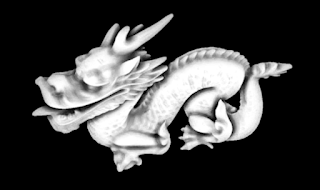Global Illumination -- which technique should you use?
Global illumination is a process that simulates indirect lighting. In the real world, light bounces around. Rays of light bounce off of walls and keep bouncing, and they don't stop. Unless we can simulate this, we'll never be able to render realistic lighting. However, due to the limitations of our present-day technology, we don't even have an efficient algorithm that simulates two bounces of light. I mean, yeah, we've got Global Illumination with Voxel Cone Tracing, but it lags a lot on mid-end devices and it isn't exactly an ideal solution for games that are targeted at consoles and mid-end computers. Ambient Occlusion techniques (SSAO being the most popular one) aren't considered to be part of Global Illumination, although they're often lumped together.
Recently we reviewed SSDO (screen-space directional occlusion), which efficiently simulates a single bounce of light. We also have Light Propagation Volumes (LPV) which is used in some of the most popular game engines (CryEngine and Unreal Engine, to name a couple). LPV also simulates one indirect light bounce. And...that's about as far as we can go if we want efficiency and a low performance cost. There's a multitude of global illumination techniques. Some of them aim to simulate specific effects while others are all-round solutions.
We'll probably never be able to simulate global illumination completely. Right now, LPV is the best we can do to achieve decent global illumination effects at an acceptable framerate. We've got to make do with what we've got. Hopefully a couple of years down the road we'll be able to optimise voxel-based global illumination such that it can run on mid-end devices, not just on computers with monstrously-powerful hardware (Nvidia Titan X, anyone?).
I personally recommend LPV, because that's what AAA game engines use. You don't have to have global illumination in your games, though; that's only if you want the best graphics. Plain ol' ambient occlusion doesn't look bad at all, and it doesn't come with too much of a cost either. Besides, the gameplay matters a lot more than the graphics; the graphics are just eye-candy.
With that, I say goodbye...for the next two weeks or so.
Recently we reviewed SSDO (screen-space directional occlusion), which efficiently simulates a single bounce of light. We also have Light Propagation Volumes (LPV) which is used in some of the most popular game engines (CryEngine and Unreal Engine, to name a couple). LPV also simulates one indirect light bounce. And...that's about as far as we can go if we want efficiency and a low performance cost. There's a multitude of global illumination techniques. Some of them aim to simulate specific effects while others are all-round solutions.
I personally recommend LPV, because that's what AAA game engines use. You don't have to have global illumination in your games, though; that's only if you want the best graphics. Plain ol' ambient occlusion doesn't look bad at all, and it doesn't come with too much of a cost either. Besides, the gameplay matters a lot more than the graphics; the graphics are just eye-candy.
With that, I say goodbye...for the next two weeks or so.

Comments
Post a Comment